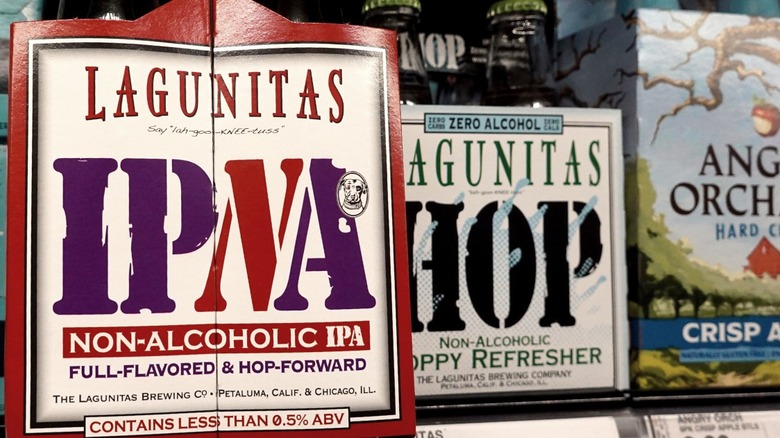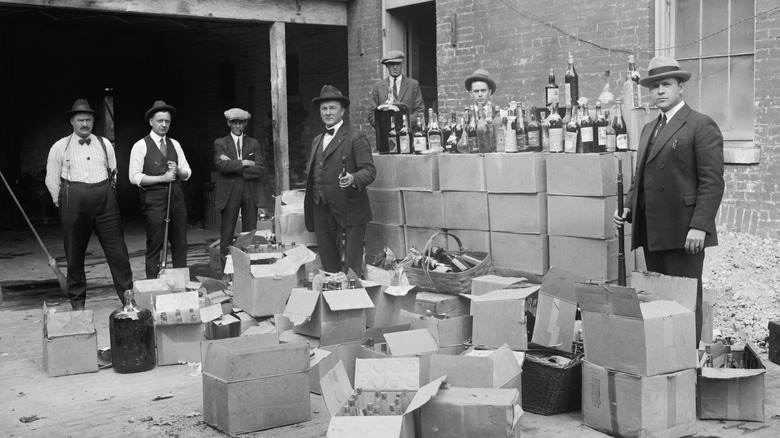The Necessary Invention Of Nonalcoholic Beer
Non-alcoholic beer is having a long-overdue moment. Whether driven by Pandemic-era drinking or concern over alcohol's adverse health effects, interest in sobriety has been skyrocketing over the last few years. Wired reports participation in challenges that encourage temporary abstinence, like dry January, has gone up over the last decade. In the same vein, a wave of new books on the topic and online influencers touting the benefits of cutting out alcohol have sold in high numbers. Civic Science reveals that almost one-fifth of Americans of drinking age are curious about going sober, the biggest categories being those under 35 (Millenials and Gen Z) at 29% and 37%, respectively.
Of course, non-alcoholic beer and alcohol alternatives aren't just for the sober; they can be a great option for anyone looking to cut back on their drinking. A growing number of high-quality, low-alcohol beers have been hitting stores, with CNBC reporting the market grew by 20% in 2022 alone, while industry leaders like Athletic Brewing have attracted significant investments. That means that anyone who just likes the taste of good beer has a lot more great non-alcoholic options these days, even just as an occasional break from the regular six-pack.
Not that long ago, it wasn't like this, with only one or two familiar brands available at liquor stores for decades. In fact, the whole idea of non-alcoholic beer came from breweries in the 20th century, during a moment of desperation.
Prohibition forced breweries to create nonalcoholic beer
While no-alcohol beer is a recent innovation by beer standards, low-alcohol beers have existed for a long time. As Anchor Brewing notes, low-alcohol beer, or small beer, was a drink widely consumed by commoners in Medieval Europe. According to Slate, people drank a lot of beer because it was a good source of cheap calories and nutrition from brewing ingredients like barley. Low-alcohol beer was also a cheaper option because it could be made using the leftovers of beers with the standard ABV content. That same kind of forced thrift and practicality would end up creating nonalcoholic beer.
According to Punch, nonalcoholic beer was first brewed during prohibition, in response to the Volstead Act, which limited the amount of alcohol in drinks to under 0.5%. Big breweries with the money to innovate were desperate to stay afloat during the 1920s, and came up with a method of making alcohol-free beer by boiling standard beer until the alcohol evaporated. Prohibition ended, and the push for nonalcoholic beer slowed down, but never quite died.
The original methods for making it produced poorly-tasting results that gave nonalcoholic beer a bad name, but Hop Culture reports that new manufacturing methods like using a membrane to filter out alcohol have been invented, and the quality of nonalcoholic beer has been improving rapidly. So while prohibition may have failed in practice, it has gifted us a legacy that may make cutting down on alcohol consumption that much easier.

